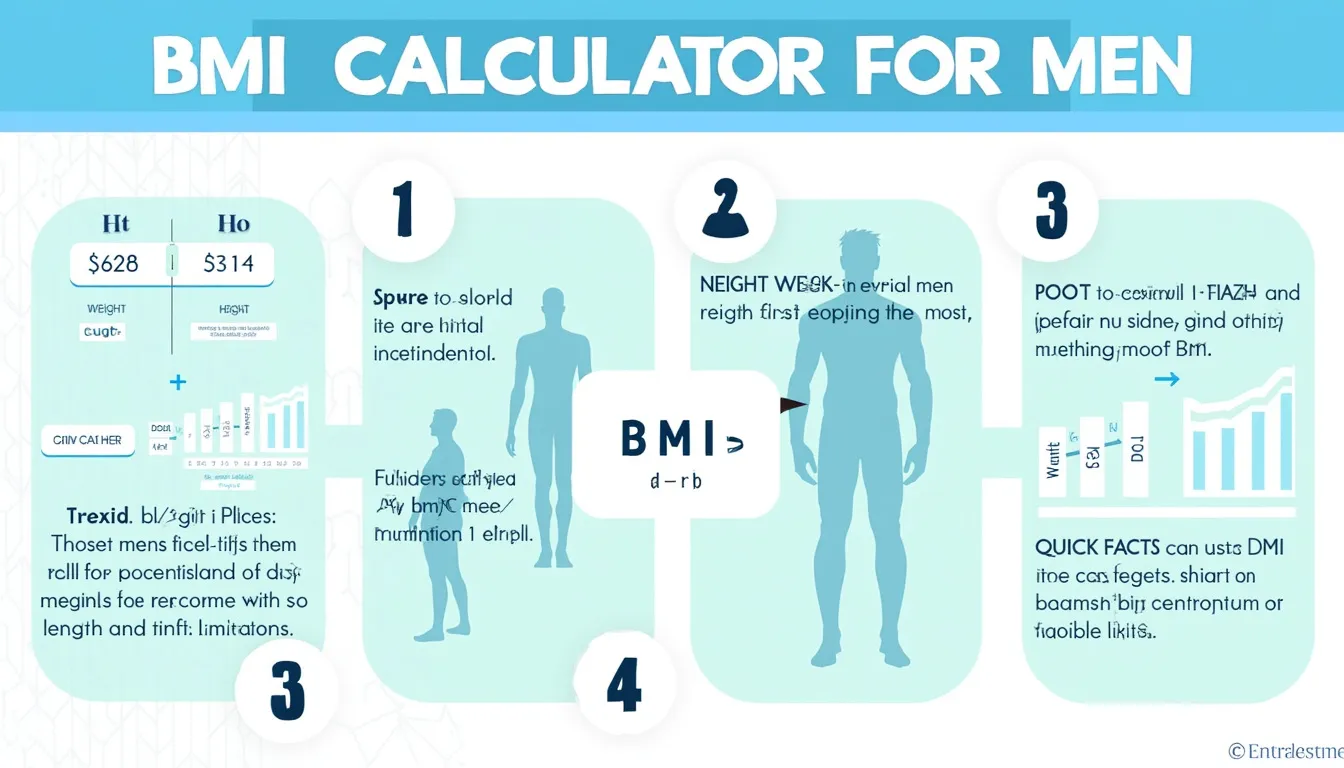BMI Calculator
Is this tool helpful?
How to use the tool
- Weight: Type your weight in pounds—e.g., 165 lbs or 240 lbs.
- Height: Enter feet and inches separately—e.g., 5 ft 8 in or 6 ft 1 in.
- Calculate: Click “Calculate BMI” to see your score and category.
Behind the numbers
The script converts English units to metric, then applies the standard equation:
$$ BMI = rac{\text{weight}_{kg}}{\text{height}_{m}^2} $$
- $$ \text{weight}_{kg} = \text{weight}_{lbs} \times 0.453592 $$
- $$ \text{height}_{in} = (\text{feet} \times 12) + \text{inches} $$
- $$ \text{height}_{m} = \text{height}_{in} \times 0.0254 $$
Example 1
165 lbs, 5 ft 8 in → 74.8 kg and 1.73 m → $$ rac{74.8}{1.73^2}=25.0 $$ (Overweight).
Example 2
240 lbs, 6 ft 1 in → 108.9 kg and 1.85 m → $$ rac{108.9}{1.85^2}=31.8 $$ (Obese).
Quick-Facts
- BMI healthy range for adults: 18.5–24.9 kg/m² (WHO, 2022).
- Overweight starts at ≥25 kg/m² (CDC BMI Basics https://www.cdc.gov).
- Each 5-unit BMI rise raises coronary heart-disease risk by 29 % (Global BMI Mortality Study, 2016).
- Waist circumference >40 in increases metabolic risk regardless of BMI (NIH Obesity Guidelines, 2013).
FAQ
What is BMI?
BMI is a height-adjusted weight index for adults that flags underweight, normal weight, overweight and obesity categories (WHO, 2022).
How accurate is BMI for muscular men?
It can overestimate fat because muscle weighs more than fat; athletes should add body-fat or waist-to-height checks (ACSM Position Stand https://www.acsm.org).
Does age change BMI cut-offs?
No—adult thresholds stay constant, but older adults should pair BMI with functional tests for a fuller picture (NIH, 2018).
Why convert to metric first?
The original formula was validated using kilograms and meters; conversion keeps calculations comparable worldwide (WHO Technical Report, 1995).
What health risks rise with high BMI?
Obesity triples type-2 diabetes risk and doubles heart-disease mortality (NCD Risk Factor Collaboration, 2017).
How often should you recalculate BMI?
Recheck every 3–6 months or after ≥5 lb change to track trends promptly (CDC Weight Management https://www.cdc.gov).
Can you be obese with a normal BMI?
Yes—visceral-fat accumulation can hide within a normal BMI; waist-to-height ratio <0.5 is safer (Ashwell & Gibson, 2016).
What do experts say?
“BMI is a practical, low-cost indicator for population fatness” (WHO Expert Committee, 2022).
Important Disclaimer
The calculations, results, and content provided by our tools are not guaranteed to be accurate, complete, or reliable. Users are responsible for verifying and interpreting the results. Our content and tools may contain errors, biases, or inconsistencies. We reserve the right to save inputs and outputs from our tools for the purposes of error debugging, bias identification, and performance improvement. External companies providing AI models used in our tools may also save and process data in accordance with their own policies. By using our tools, you consent to this data collection and processing. We reserve the right to limit the usage of our tools based on current usability factors. By using our tools, you acknowledge that you have read, understood, and agreed to this disclaimer. You accept the inherent risks and limitations associated with the use of our tools and services.







